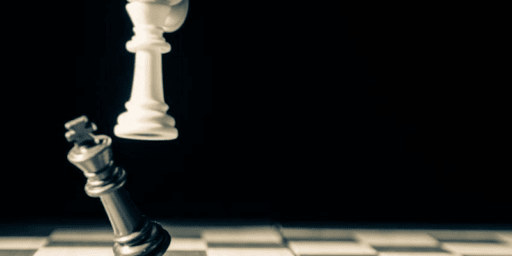Official Passive Income Rules for Canadian Small Business
In the Summer of 2017, the Canadian government dropped a tax bomb on Canadian small business owners with proposed changes to how they are able to split their income and their ability to invest excess cash flow into passive investments. While they had some vague guidelines, they did not have concrete rules to wrap our heads around. All we had was speculation.
They have since provided clarification on income sprinkling and Federal Budget 2018 provided clarity on the rules around passive investment portfolios within a private corporation.
Background information
As many of you know, I use my corporate cash to invest in dividend stocks. Investment income within a corporation is taxed at a high rate, however, if public dividends are flowed through to shareholders, the dividend will be taxed at the shareholder’s personal tax rate.
Related: How to build a dividend portfolio.
The perceived advantage is that corporations can invest more upfront due to the lower small business tax (on revenues up to $500k). In other words, there are more after-tax dollars to invest with compared to if the money was withdrawn to a shareholder, personally taxed, then invested.
The proposal is not clear on the exact changes with passive investing within a corporation, but one proposed change is to eliminate the capital dividend account (CDA) from passive investment income. The CDA basically allows 50% of the capital gain to flow through to a shareholder tax-free, and the other 50% to be taxed at a high corporate rate (~47%).
I suspect that they’ll come up with more schemes to make it very unattractive to build a portfolio within a corporate account. Some good news though, there is some indication that existing corporate passive investment accounts will be exempt.
Passive Investment Portfolios within a Corporation
Finally some clarification on the rules, and some good news upfront – they didn’t mess with the capital dividend account (CDA) as mentioned above.
Essentially, they set a threshold for passive income within a private corporation to $50,000 per year. What counts as passive income? Dividends, interest, and 50% of capital gains. A simple example is that if you have a $1M portfolio that generates $50,000 through a combination of dividends, interest, and capital gains (50%), you’d still be onside.
The penalty for going over $50k in passive income is what I was most concerned about, but it’s actually not as bad as I anticipated.
Once your company generates more than $50,000 in passive income within a private corporation, access to the small business tax rate will gradually reduce until it is eliminated when/if you hit $150,000 in passive income.
To rewind a little, small businesses get access to the small business tax rate for the first $500k in active earnings (approx 10% tax rate). After $500k, active earnings are taxed at the general tax rate of 15%.
So if you have a portfolio within your corporation that generates more than $50k/year in passive income, more of your corporate active income will face the higher general tax rate.
The small business deduction limit will get reduced by $5 for every $1 in excess passive income. I can illustrate this better with a table.
The table below is a summary of the tax penalty by the amount of passive income. The table assumes:
- Small business tax rate of 10%;
- General corporate tax rate of 15%; and,
- Active earnings greater than $500k.
This table shows the federal tax penalty only. The penalties will be much higher if the provinces follow.
| Passive Income | Small Biz Deduction Limit | Tax Penalty |
| $50,000.00 | $500,000.00 | $0.00 |
| $60,000.00 | $450,000.00 | $2,500.00 |
| $70,000.00 | $400,000.00 | $5,000.00 |
| $80,000.00 | $350,000.00 | $7,500.00 |
| $90,000.00 | $300,000.00 | $10,000.00 |
| $100,000.00 | $250,000.00 | $12,500.00 |
| $110,000.00 | $200,000.00 | $15,000.00 |
| $120,000.00 | $150,000.00 | $17,500.00 |
| $130,000.00 | $100,000.00 | $20,000.00 |
| $140,000.00 | $50,000.00 | $22,500.00 |
| $150,000.00 | $0.00 | $25,000.00 |
For example, let’s say that your corp has $80k in passive income which is $30k over the limit. This means that $30k * 5 = $150k is removed from the small business preferred tax threshold.
In other words, only $350k of active business income is eligible under the small business tax rate of 10% rather than the general corporate tax rate of 15%. In this case, the business owner would pay an additional $150k * 5% = $7,500 in corporate tax (following the assumptions in the table above).
Remember that the numbers above assume that your corporation makes over $500k in earnings annually. If your corp make less, it simply means that your passive income threshold is higher without impacting your company in terms of taxes. So if your corporation earns regularly $200k per year, you can generate passive income of up to $110k without any tax penalties.
The companies/shareholders that will be taking the biggest hit are ones that generate $500k or greater in earnings and have large passive portfolios within their corporation (think Dr. Specialist that is near retirement with a $10M portfolio). While the new rules may hurt if the Doctor continues to work, but it will work out once she/he retires and lives off the portfolio (ie. no more active income). I can see these new rules as an incentive for earlier than planned retirement for some professionals!
I can also see larger passive portfolios within a corporation shifting to investments that have very little or no distributions. No distributions mean no impact on the small business tax rate. Here are some ways to index a portfolio with no distributions.
One more thing – they will not be grandfathering any existing accounts, so these new rules are in effect for all passive portfolios within a corporation.
On a personal level, since our company is small, and generates well under the $50k threshold, these changes have little impact on our financial strategy going forward. What about you? What are your thoughts on the new passive income rules?











Hi just wondering what if i wanted to start a business for my current personal passive investment income thats less than 150k a year.
Would I be able to use the SBD in this case if theres 0 active income?
Could anyone point me in the direction of the tax rate for eligible dividends received as passive income by a corporation that don’t flow through the shareholders?
IE My corp owns stock in BCE, I get $1000 in eligible dividends, what is the tax owed? I have been struggling to find this, thanks!
Hi David, this link should help clarify receiving public dividends within a corp. https://ca.rbcwealthmanagement.com/documents/121550/121570/Taxation+of+Investment+Income.pdf/a55e8c35-1eb7-4e3a-98aa-f59e3884ffdf
Note that the tax will be refunded once flowed through to shareholders.
Thanks for the post!
Great explanation of the new rules FT!
I am wondering, do you think DRIP would be considered passive income in the eyes of the CRA?
If drip shows up on a t5 statement then yes it would count as passive income .
The 1,000,000 at 5% example works if the revenues are stable. What if one year the stock market goes up 25% and the next it goes down 8%?
Anna, my understanding is that the $50k limit is for realized gains only. That is, dividends and interest and realized capital gains. So if you don’t sell any investments that year (even if your investments go up 25%), then only dividends and interest will count towards the $50k threshold. If your account is so big that even dividends and interest surpass $50k, then it might be worth looking at investments with lower distributions (for example: https://milliondollarjourney.com/a-super-tax-efficient-index-etf-portfolio-for-your-non-registered-account.htm).
Hope this helps!
Thank you for your reply, however I am looking for a simple theoretical example of how it does or doesn’t benefit to have the properties held in a corporation vs personally. I understand the concepts of bank and mortgage implications related to the roll over that isnt per se my question I am trying to answer. Simply put; if one had 10 condo annual revenue of 150k and net income of 24k at say a marginal tax rate of 36%… in a roll over situation with your exemptions examples you provides above what will the same tax consequence be if held in a corporation.
This website does a good job of explaning the new RDTOH rules:
https://www.osler.com/en/resources/regulations/2018/federal-budget-briefing-2018
Before, I believe there was a little loophole where companies were issuing “eligible” dividends to shareholders where they probably should have been non-eligible (ie. they should have paid more tax). From my understanding of the new rules, any eligible dividends received within your corporate portfolio can still flow through to shareholders.
Thank you FT for the detailed explanation, that makes sense.
I will make sure to ask my accountant as well. Good info!
Report back if you hear different. There will be many opinions.
FT,
Let’s look at this example.
Corporation has $400,000 in active income (yearly).
A corporate portfolio of $1,000,000 invested in Canadian stocks (for simplicity let’s assume everything is invested in BCE.TO) that distribute $50,000 in eligible dividends annually.
From your understanding, there will basically be no tax changes in terms of ability to “flow-through” the dividends (as eligible dividends) to a shareholder of the corporation?
What about the changes to the RDTOH account(s) within the corporation? I tried understanding, but it was a bit over my head.
Thank you.
In your example, there should be no additional taxes incurred. Flowing through dividends can still happen, but there will be changes to how the RDTOH accounts will be handled within the corp. Going forward, there will be an “Eligible RDTOH” and a “non-eligible RDTOH”. My understanding is that public dividends received will fall into the “eligible” pile, and I assume international dividends will fall into the “non-eligible” group. With all these confusing rules, the best course of action may be to get money out of your corporation as fast (but as efficiently) as possible. :)
More information from another website:
http://www.blakesbusinessclass.com/2018-federal-budget-selected-tax-measures/
So for clarity, if lets say I own 10 condos ($150,000 in revenue/yr) and they are currently held personally which makes my tax liability at my marginal tax rate. If I was to rearrange the structure and transfer the condos into a passive income corporation what will be the tax rate if it was held in that corp? (net income is $25,000)
Yo, you would need to consult an accountant for the proper structure of your real estate business. Besides taxation, is there a benefit in moving your real estate holdings into a corp?
I hear you with the consulting an accountant. But purely tax strategy wise is moving the condo holdings into a passive corp will that relieve a person from being liable for tax with their tax marginal rate to the passive corporate rate?
Hi Yo, This article should help with some of the tax issues of putting your properties into a corp: http://www.moneysense.ca/save/taxes/rental-properties-corporation-save-taxes/
As for tax advantages, I’m uncertain about whether rental income would be considered “passive or active”. Either way, it should be fairly even from an integrated point of view (ie. even if you get a tax advantage within a corp, it will generally even out once you withdraw it).
I’m almost positive rental income is considered passive income.
Some banks won’t allow their mortgages to be held by a corporation, or if they do, the qualification rules and rates will change.
I would be more worried about the liability of 10 condos that only cash flow $200 a month. Wouldn’t take much of a rate hike or vacancy to wipe that out. Holding them personally allows you to take losses against your regular income, whereas corporately that would not be available.